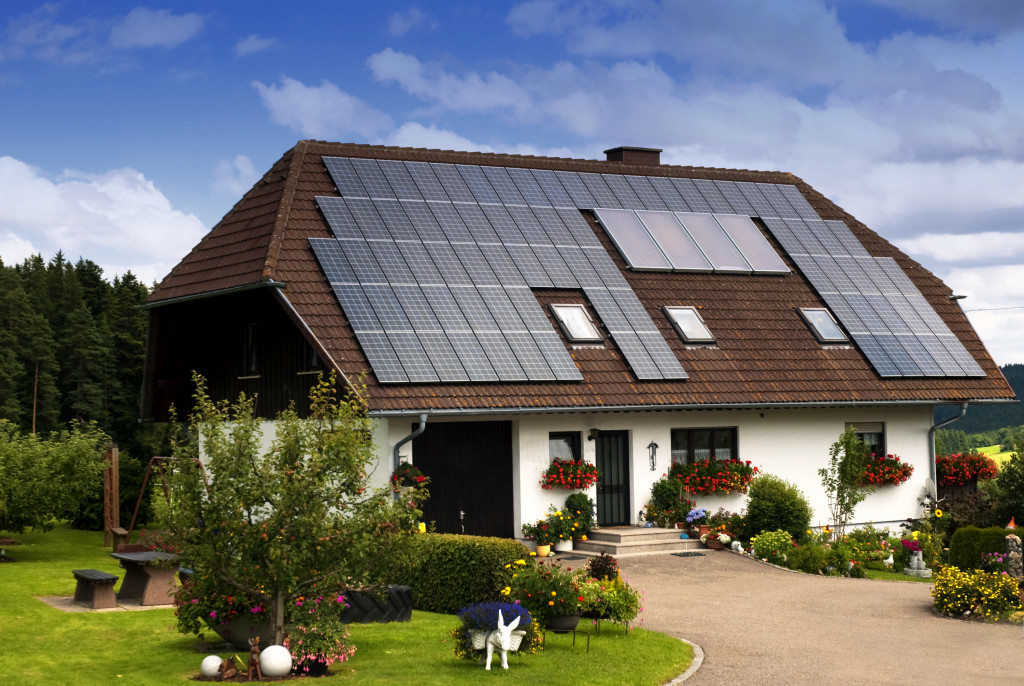A sustainable home is a dwelling that homeowners designed, built, and operated to minimize the impact on the environment. It aims to use resources efficiently and reduce pollution and waste. And as the world becomes more aware of the importance of sustainability, many people are looking for ways to make their homes more sustainable.
If you happen to be one of those people, here are some essential elements of an eco-friendly home.
Renewable energy sources
As the effects of climate change become more and more apparent, it’s essential to do your part to reduce your carbon footprint. One way to do this is to incorporate renewable energy sources into your homes. These sources are environmentally friendly because they don’t produce greenhouse gases.
Solar panels are a popular option, as many solar panel companies provide solar panel installation services at an affordable price. But there are other options, such as wind turbines and geothermal energy. These resources are ideal if your home is in an area with good wind or water flow.
Using renewable energy sources can help reduce your home’s reliance on fossil fuels. It can also help you save money on your energy bills. In addition, renewable energy is a sustainable source of power, meaning that it won’t run out the way fossil fuels will.
Switching to renewables is good for the environment, and it’s good for your wallet. So why not make the switch today?
Natural lighting
Most people are familiar with the benefits of natural lighting, but incorporating natural light into your home is even more critical when it comes to sustainability. Using sunlight to light your home can reduce your carbon footprint, save you money on energy costs, and improve your health.
The sun is a free source of light, so using it to light your home doesn’t contribute to greenhouse gas emissions. In fact, according to The Climate Group, switching to energy-efficient lighting can reduce your home’s carbon dioxide emissions by up to 1,400 million tons.
In addition to being good for the environment, solar lighting is also good for your wallet. Energy-efficient lighting can save you up to 75% on your electricity bill. In some cases, you may even be eligible for government rebates.
Plus, there are health benefits to consider. Studies have shown that exposure to natural light can improve mood, relieve stress, and boost productivity. So if you’re looking for ways to make your home more sustainable, natural lighting should be at the top of your list.
Composting
As any gardener knows, compost is essential for healthy plants. It provides nutrients and support for roots and also helps to regulate moisture levels and prevent weed growth. However, commercial compost can be expensive, often containing harmful chemicals.
One way to make your gardening more sustainable is to compost at home. You can quickly turn kitchen scraps and yard waste into rich compost that will nourish your plants while helping to reduce waste. If you don’t have a lot of space, you can even compost indoors. Small-scale composters are available that fit easily under a sink or on a windowsill.
You can also use your compost to reduce your carbon footprint. Composting helps to sequester carbon in the soil, which can offset some greenhouse gas emissions from your home. By composting at home, you can save money and help the environment simultaneously.

Recycling
Another way to make your home more sustainable is to recycle. Recycling helps to reduce greenhouse gas emissions and conserve resources.
The process of recycling requires less energy than making new products from scratch. And when you recycle, you’re not just limited to paper and plastic. You can recycle glass, metal, and even some types of electronics.
In addition to reducing greenhouse gas emissions, recycling also conserves resources. Every ton of recycled paper saves 17 trees, and every recycled glass bottle saves enough energy to power a 100-watt lightbulb for 4 hours.
That’s why recycling is such an essential part of sustainable living. Not only does it help the environment, but it also helps you save money and resources.
Sustainable building materials
If you’re looking to make your home more sustainable, consider using sustainable building materials. Sustainable building materials have a low environmental impact and can be reused or recycled.
Some sustainable building materials include bamboo, cork, and linoleum. These materials are durable and eco-friendly, and they can help you create a healthy and sustainable home. You can find these sustainable building materials at most home improvement stores or order them online.
When you use sustainable building materials, you’re not just helping the environment but also helping yourself. These materials are often less expensive than traditional building materials. They can help you save money in the long run.
Sustainability is vital for both people and the environment. When you make your home more sustainable, you’re helping the planet and saving money and resources. There are many ways to make your home more sustainable, from installing natural energy sources to eco-friendly practices and using sustainable building materials. So if you’re looking for ways to reduce your carbon footprint, make your home more sustainable. You’ll be glad you did.

